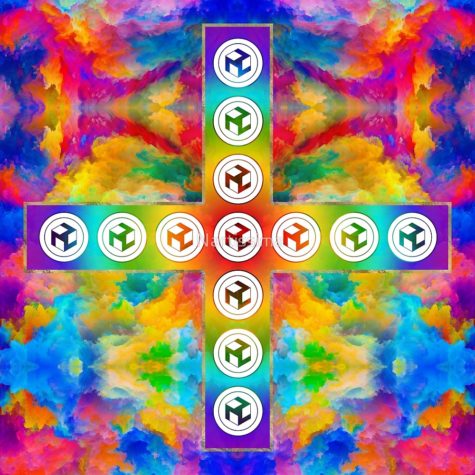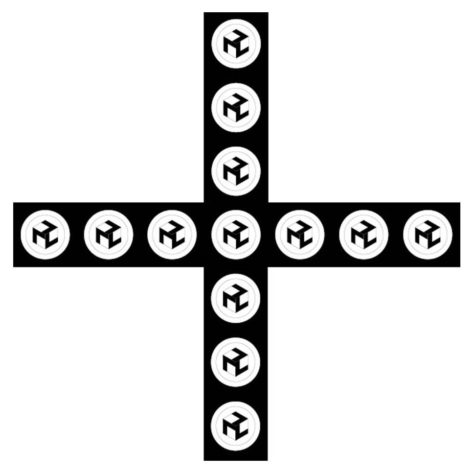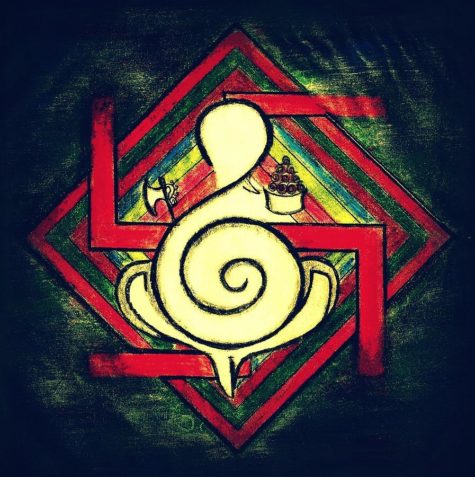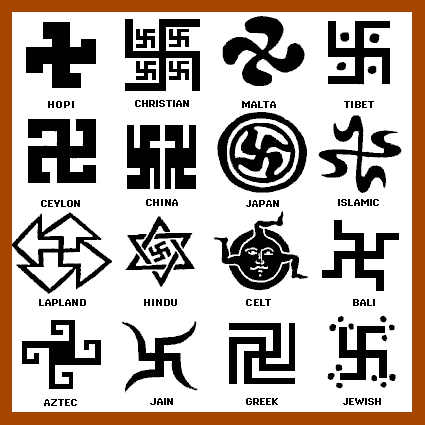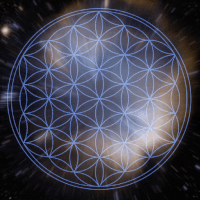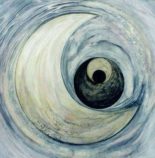Cross
The Antahkarana Cosmic Cross
The Antahkarana Cosmic Cross is made of seven Antahkarana symbols crossing each other. This represents the seven major chakras. This symbol will purify your energy and can be used to open the heart. It maintains sacred space, and helps your higher guides to work more effectively.
This three dimensional symbol is used in Reiki. It has its own consciousness and works directly with your aura and chakras causing deep healing.
More about this ancient symbol, along with suggestions on how to use it, can be found in this post: The Antahkarana. Here’s a black and white image to download and experiment with:
Sources:
The Swastika
The swastika has been regarded as the symbol for good luck, protection and auspiciousness for over five thousand years in India. It is derived from ‘SU-VASTI’ and means “The essence of all goodness”. For Hindus the swastika is a lucky cross associated with the good fortunes given by Lord Ganesha. It also represents the sun and the cycle of life.
This ancient benign symbol is used today by housewives to guard thresholds and doors, by priests to sanctify ceremonies and offerings and by businessmen to bless the opening pages of account books each New Year’s day. No ceremony or sacrifice is considered complete without it, for it is believed to have the power to ward off misfortune and negative forces.
It is said that the swastika’s right-angled arms reflect the fact that the path toward our objectives is often not straight, but takes unexpected turns. They denote also the indirect way in which Divinity is reached — through intuition and not by intellect. Symbolically, the swastika’s cross is said to represent God and creation.
The four bent arms stand for the four human aims:
- Righteousness – dharma
- Wealth – artha
- Love – kama
- Liberation – moksha.
It also represents the world wheel, eternally turning around a fixed center, God. The swastika is associated with the muladhara chakra, the center of consciousness at the base of the spine, and in some yoga schools with the manipura chakra at the navel, the center of the microcosmic sun (surya).
The swastika is a sacred sign of prosperity and auspiciousness, perhaps the single most common emblem in earth cultures. As the Encyclopaedia Britannica explains, “It was a favorite symbol on ancient Mesopotamian coinage; it appeared in early Christian and Byzantine art (where it became known as the gammadion cross because its arms resemble the Greek letter gamma); and it occurred in South and Central America (among the Mayans) and in North America (principally among the Navajos). In India it continues to be the most widely used auspicious symbol of Hindus, Jainas and Buddhists.”
When Buddhism emerged from India’s spiritual wellspring, it inherited the right-angled emblem. Carried by monks, the good-luck design journeyed north over the Himalayas into China, often carved in statues into Buddha’s feet and splayed into a spectrum of decorative meandering or interconnecting swastikas.
On the other side of the planet, American Indians inscribed the spoked sign of good luck into salmon-colored seashells, healing sticks, pottery, woven garments and blankets. Two thousand miles south, the Mayans of the Yucatan chiseled it into temple diagrams.
Once moored to the ancient highland cultures of Asia Minor, the emblem later voyaged around the Mediterranean, through Egypt and Greece, south into the African nations, northward into Saxon lands and Scandinavia and west to Scotland and Ireland.
 In the 1930s, when Adolf Hitler’s Nazi Third Reich rose to power in Germany and engulfed the planet in World War II, the fortunes of the swastika declined. From September 1935 to the fall of the Nazis in 1945 it was displayed on the Reich’s official flag, a black swastika in a white circle against a red field. German soldiers also wore the hackenkrenz (“hooked cross”) on their uniforms, in a circle beneath an eagle, and displayed it on their armory.
In the 1930s, when Adolf Hitler’s Nazi Third Reich rose to power in Germany and engulfed the planet in World War II, the fortunes of the swastika declined. From September 1935 to the fall of the Nazis in 1945 it was displayed on the Reich’s official flag, a black swastika in a white circle against a red field. German soldiers also wore the hackenkrenz (“hooked cross”) on their uniforms, in a circle beneath an eagle, and displayed it on their armory.
In the West it became an infamous, hated symbol of fascism and anti-Semitism and was banned by the Allied Command at the war’s end, though the swastika’s history is as extensive in the West as in Asia.
Because of its infamous association with the Third Reich, the swastika was and still is abhorred by many inside and outside of Germany, still held in disparagement and misunderstanding, which itself is understandable though unfortunate.
Now is a time for this to change, for a return to this solar symbol’s pure and happy beginnings. Ironically, even now Hindus managing temples in Germany innocently display on walls and entryways the swastika, the ancient symbol of Lord Ganesha and more recently the hated insigne of Nazism, alongside the shatkona, six-pointed star, the ancient symbol representing God Siva and Lord Karttikeya and as Star of David, the not so ancient but cherished already for centuries emblem of Judaism.
The swastika is an emblem of geometric perfection. In the mind’s eye it can be stable and still or whirl in perpetual motion, its arms rotating one after another like a cosmic pinwheel. It is unknown why and how the term swastika, “may it be good,” was wedded to this most ancient and pervasive of symbols. Most authorities designate the right-hand swastika as a solar emblem, capturing the sun’s path from east to west, a clockwise motion. One theory says it represents the outward dispersion of the universe.
One of its finest meanings is that transcendent reality is not attained directly through the logic of the mind, but indirectly and mysteriously through the intuitive, cosmic mind. Though Hindus use the swastika straight up and down, other cultures rotated it at various angles.
From a mystically occult point of view the swastika is a type of yantra, a psychic diagram representing the four-petalled muladhara chakra located at the base of the spine within everyone.
Much of this information came from Loving Ganesa
by Satguru Sivaya Subramuniyaswami
Brighids Cross
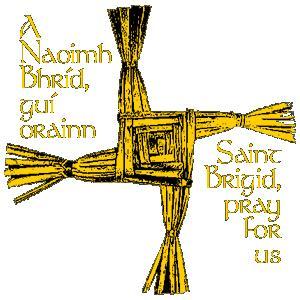 Corn dollies are frequently constructed in the shape of Brighids Cross, and although the symbol itself predates Christianity, it was given the name of the saint in order to ease the passage of acceptance of the new religion.
Corn dollies are frequently constructed in the shape of Brighids Cross, and although the symbol itself predates Christianity, it was given the name of the saint in order to ease the passage of acceptance of the new religion.
The symbol is reminiscent of the ancient Sun symbol, the swastika, its four arms pointing to the cardinal points of the compass. They also represent the Elements, with the point at the center indicating the fifth element of quintessence.
From: Encyclopedia of Secret Signs and Symbols
